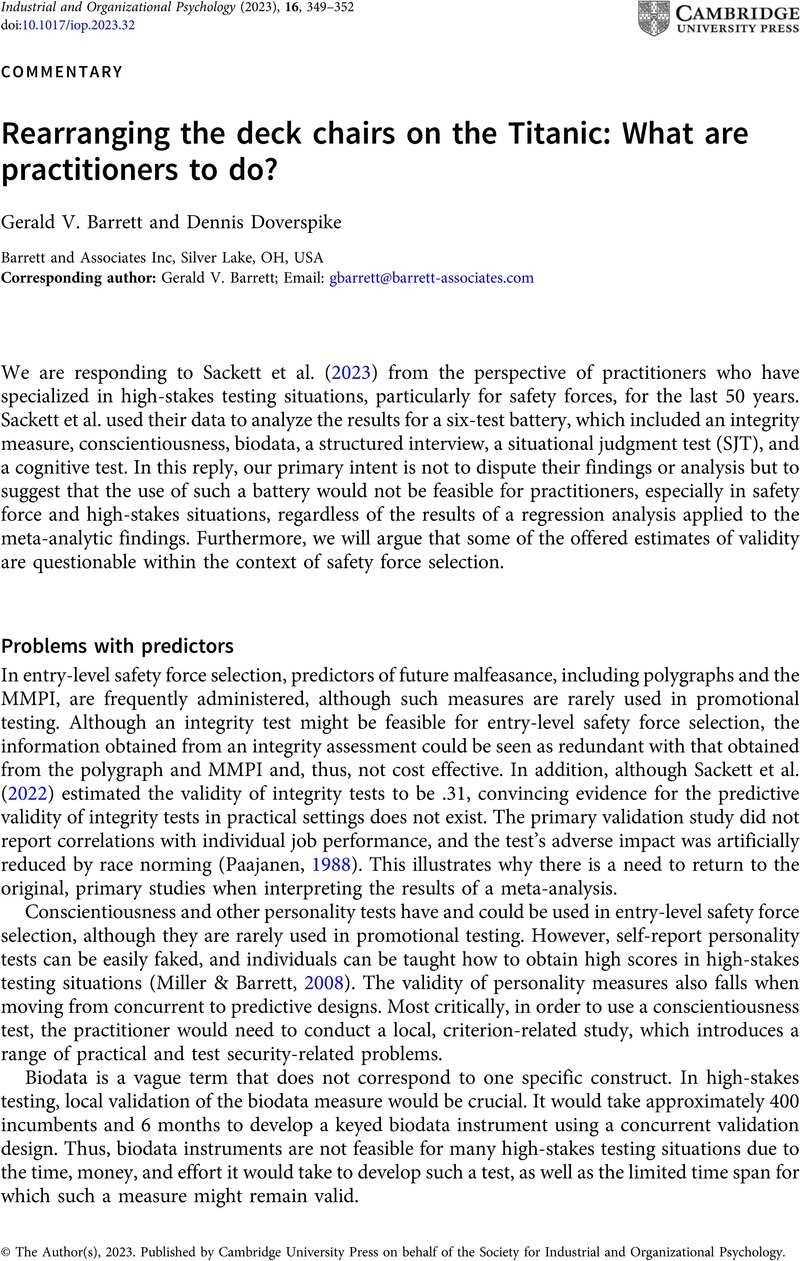No CrossRef data available.
Article contents
Rearranging the deck chairs on the Titanic: What are practitioners to do?
Published online by Cambridge University Press: 31 August 2023
Abstract

- Type
- Commentaries
- Information
- Copyright
- © The Author(s), 2023. Published by Cambridge University Press on behalf of the Society for Industrial and Organizational Psychology


